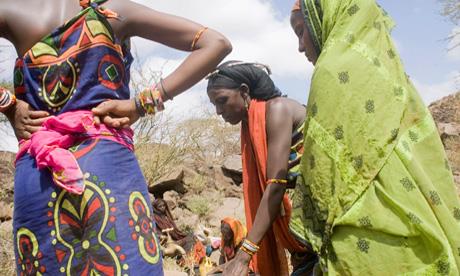Investing in rural women for food security
Chicken-raising collectives, water-harvesting systems and community-based savings and credit schemes are some of the strategies that women’s groups have used to boost food production and incomes, showing themselves to be indispensable in the fight against

Coping strategies, knowledge of women producers key to large-scale improvements in rural development [FAO/G. Napolitano]
Despite the devastating effects of the recent food and economic crises, women in vulnerable rural communities worldwide have drawn on their adaptability, resilience and mutual support to come up with effective coping strategies, a report prepared for FAO shows.
The report, “Supporting women producers to respond to the challenges of food insecurity,” summarizes face-to-face consultations conducted with hundreds of women in 23 countries. FAO and its partners in the research project, the Huairou Commission and WOCAN, presented the paper during the 1-12 March meeting of the UN Commission on the Status of Women.
The idea was to give rural women in developing countries a chance to have their voices heard in the global dialogue on food security.
The women, from 24 grassroots organizations in Africa, Asia, Latin America and the Caribbean, said food insecurity in their communities had grown worse amid recent economic pressures, climate change, a shortage of decent employment in rural areas, and a chronic lack of control over, land, water and other productive resources.
By organizing themselves into groups, the women had combined their collective determination and organizational skills with practical knowledge of local natural resources and traditional agricultural methods. Together, they improved the availability of nutritious food, boosted small-scale agriculture, and generated alternative income.
Collective efforts
In Asia, women developed water harvesting projects and made irrigation systems more accessible, thus reducing their vulnerability to drought. Rural groups worked together to develop communal kitchens in Peru, chicken-raising collectives in Jamaica, and community-based savings and credit groups in Nepal. In Ghana, farmers shared tractor-related expenses.
Some women described pooling their resources to obtain seeds and successfully bargain for cheaper prices from farmers or shops. With the help of larger associations, some rural groups gained training in improved technologies for irrigation, seed storage, food processing, marketing and eco-friendly packaging.
But the women said they still lacked access to the most basic means necessary to ensure food security for themselves and their families.
Complex scenario
While the findings differed slightly from region to region due to cultural, political and economic contexts, the rural women surveyed perceived many of the same causes of food security in their communities. They typically listed a complex combination of factors, including high food prices; climate change and degradation of local biodiversity and seed supplies; lack of access to land and water; privatization of land, and use of land for biofuels.
Climate change cast a pall over communities in every region. In Cameroon, one woman farmer wrote, “We are confused about the climate and we do not know when to plant.” In Tanzania, Maasai women were unable to sell enough milk from their cattle when drought led the animals to produce less milk.
One of the major gaps which took a greater toll on rural women than their male counterparts was the lack of land rights or practical control over land and water resources. Even in cases where national constitutions recognized their rights to land, conflicting laws or customary practices often denied women the right to own or inherit land.
In Nepal, women said they feared that “without land, we will die of hunger.” A woman in Kenya said that women needed loans to buy land, adding that it had been “a tradition for the issues of land to be a preserve of men,” but that women could “do a lot more if given the same opportunities like men.”
Recommendations
In speaking out about the challenges they face, the women were quick to say what they need to be able to feed themselves and their families and to improve their prospects for a better future. They said community leaders and governments should:
• give women access to local seeds and control over land and water
• include them in community meetings and decision-making processes that affect their lives and that of their households
• offer them training in new agricultural practices
• give importance to their traditional knowledge in agriculture, as it protects natural resources like land, water, plants and animals
• set up national seed banks to store local and traditional varieties
• help them to secure their livelihoods and to deal with the impact of climate change
